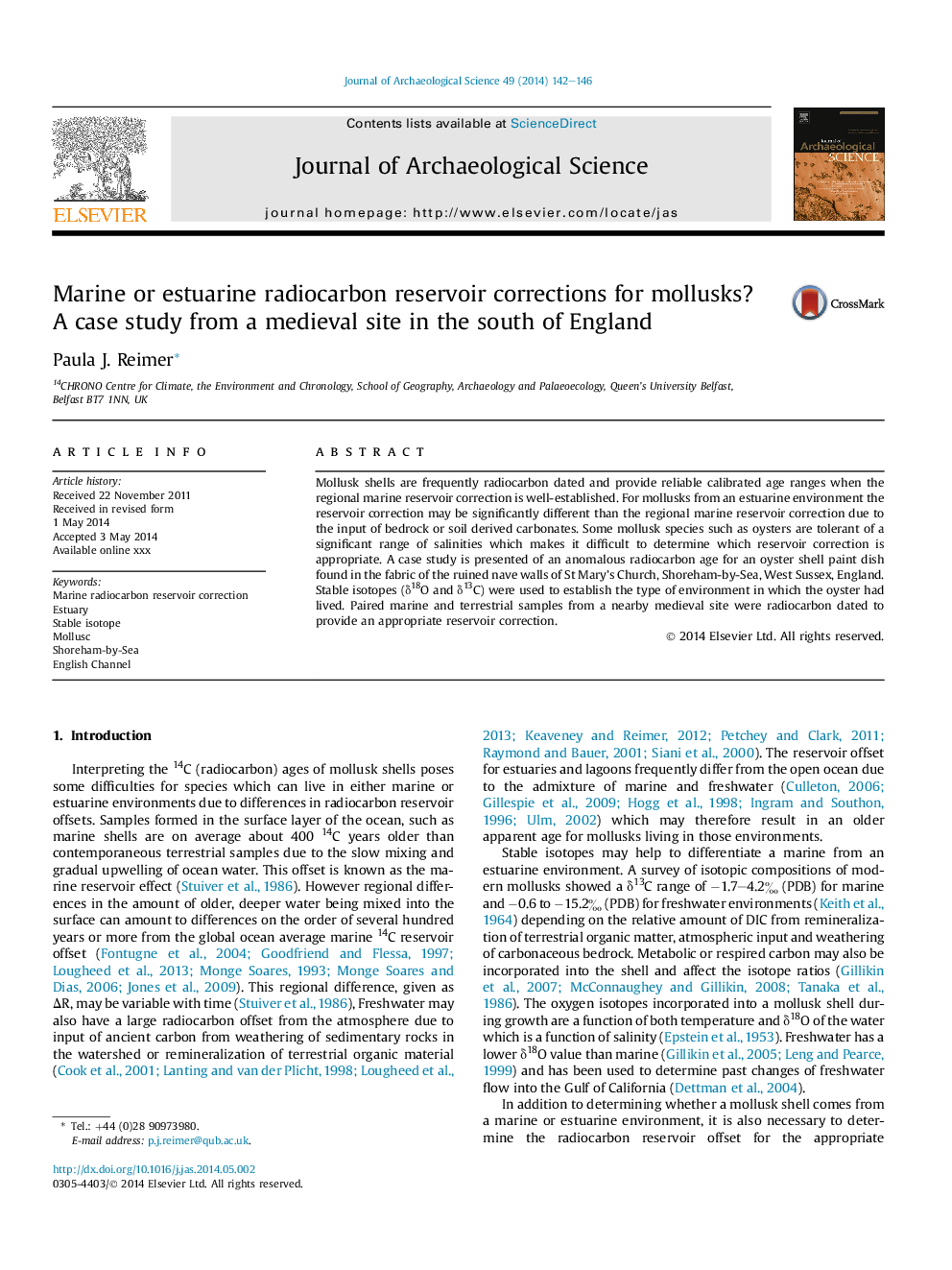| Article ID | Journal | Published Year | Pages | File Type |
|---|---|---|---|---|
| 7442949 | Journal of Archaeological Science | 2014 | 5 Pages |
Abstract
Mollusk shells are frequently radiocarbon dated and provide reliable calibrated age ranges when the regional marine reservoir correction is well-established. For mollusks from an estuarine environment the reservoir correction may be significantly different than the regional marine reservoir correction due to the input of bedrock or soil derived carbonates. Some mollusk species such as oysters are tolerant of a significant range of salinities which makes it difficult to determine which reservoir correction is appropriate. A case study is presented of an anomalous radiocarbon age for an oyster shell paint dish found in the fabric of the ruined nave walls of St Mary's Church, Shoreham-by-Sea, West Sussex, England. Stable isotopes (δ18O and δ13C) were used to establish the type of environment in which the oyster had lived. Paired marine and terrestrial samples from a nearby medieval site were radiocarbon dated to provide an appropriate reservoir correction.
Related Topics
Physical Sciences and Engineering
Materials Science
Materials Science (General)
Authors
Paula J. Reimer,
